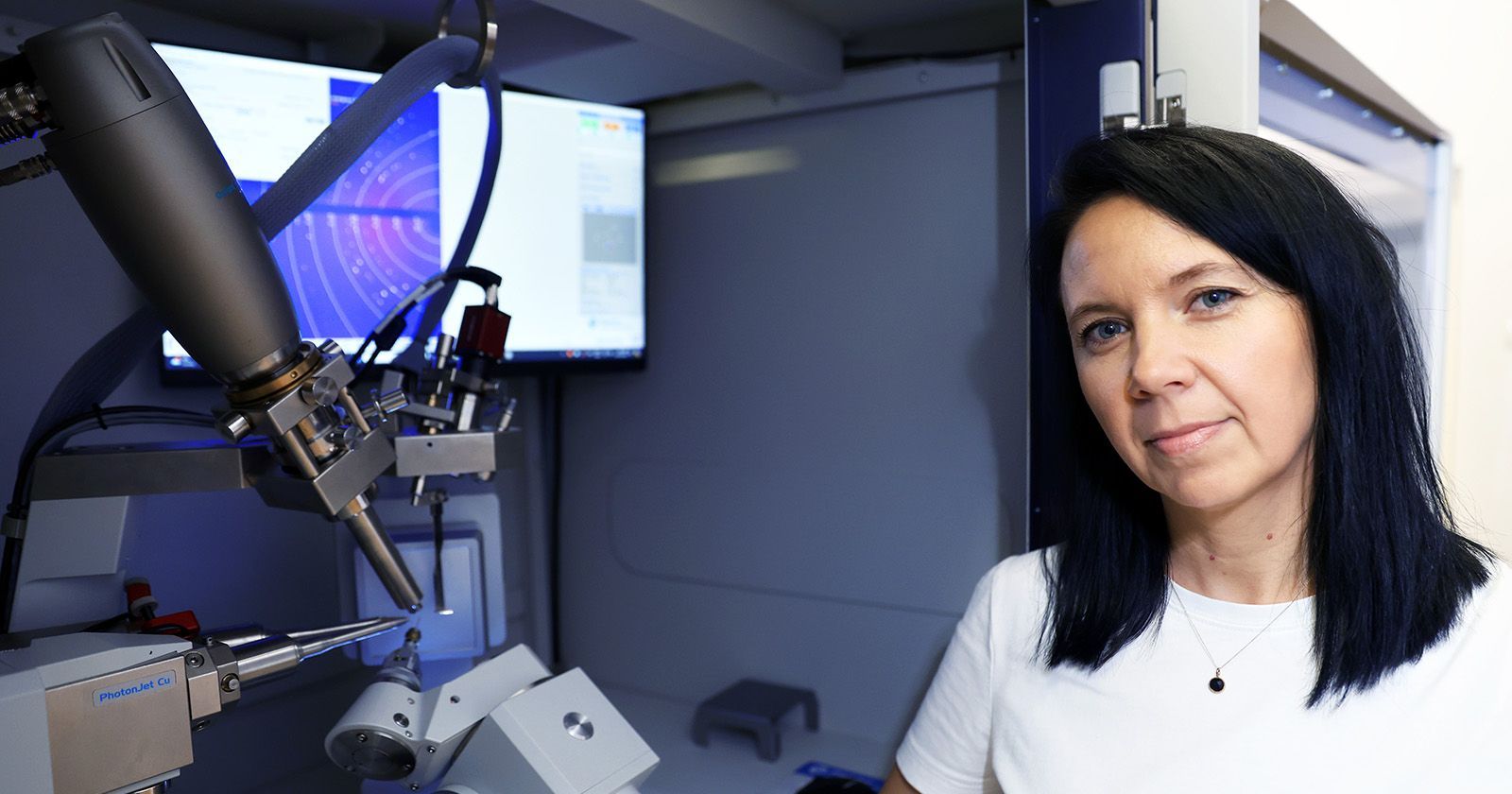 Natural sciences
Natural sciences
Guardians of Immunity Awarded the Nobel Prize
Mary E. Brunkow, Fred Ramsdell, and Shimon Sakaguchi have been awarded the Nobel Prize in Medicine for their discoveries concerning peripheral immune tolerance. “These discoveries have given us, physicians, a powerful weapon in the fight against autoimmune and cancerous diseases," says Dr. habil. Sylwia Kołtan, Professor at the NCU Faculty of Medicine.
In Scandinavia, the Nobel Week has begun. As tradition dictates, the first laureates to be announced are those in the field of Physiology or Medicine. Members of the Royal Swedish Academy of Sciences emphasized in their justification of this year's choice that the laureates “identified the cells that serve as the guardians of the immune system – regulatory T lymphocytes – thereby laying the foundation for a new field of research."
The immune system is one of the three most important organs integrating the function of the entire organism," explains Professor Sylwia Kołtan from the Department of Pediatrics, Hematology, Oncology, Immunology, and Transplantology at the Nicolaus Copernicus University (NCU) Faculty of Medicine, Collegium Medicum, and National Consultant in Clinical Immunology. “Together with the nervous and endocrine systems, it coordinates the activity of all components of the human body."
The researcher from the Collegium Medicum of NCU emphasizes that one of the mechanisms ensuring overall health is immune regulation. Thanks to it, our body can destroy invading microorganisms without causing significant harm to the affected tissues or organs. Immune regulation is responsible for protecting the body from self-destruction. Moreover, it can either protect against or promote the development of cancer cells. Since immune regulation is one of the most vital processes ensuring survival, it operates on multiple levels. Two fundamental mechanisms of immune regulation are distinguished: central and peripheral.

Ill. Niklas Elmehed © Nobel Prize Outreach
“The great achievement of this year's Nobel laureates is the discovery of the mechanisms of peripheral immune regulation, carried out, among others, by regulatory T lymphocytes (Treg)," says Professor Sylwia Kołtan. “We can understand how crucial the role of Treg cells is in immune regulation by analyzing the health problems of children in whom this population of lymphocytes is severely impaired. One such condition is the genetically determined IPEX syndrome (Immune Dysregulation, Polyendocrinopathy, Enteropathy, X-linked). These children are usually born already ill, suffering from type 1 diabetes and chronic diarrhea, with further severe, treatment-resistant autoimmune diseases developing during the first years of life. Without a bone marrow transplant, survival for these children is virtually impossible."
The researcher notes that, on the other hand, Treg lymphocytes are an attractive target for various immunotherapies - aimed at either increasing or decreasing their activity. In patients suffering from autoimmune diseases or symptoms, efforts can be made to enhance the number and activity of Treg cells in order to suppress pathological reactions directed against the body's own tissues and organs. Conversely, in cancer patients, Treg cells can - and do - serve the opposite purpose: by using drugs that inhibit the proliferation and activity of Treg cells, it is possible to induce a stronger immune response from effector cells of the immune system, ultimately leading to the destruction of cancer cells.
Treg lymphocytes, formerly classified as suppressor T cells (Ts), constitute a subpopulation of lymphocytes responsible for suppressing excessive immune responses, without causing general immunodeficiency," adds Prof. Jan Styczyński, MD, PhD, Head of the Department of Pediatrics, Hematology, Oncology, Immunology, and Transplantology at the NCU Faculty of Medicine, Collegium Medicum, and National Consultant in Pediatric Oncology and Hematology. “At the same time, they maintain tolerance to self-antigens, thereby protecting the body from autoimmunity - that is, self-aggression and chronic inflammation."
Both dysfunction and excessive activity of the immune system are detrimental and pose serious threats to human health. Excessive immune activity leads to autoimmune aggression, resulting in chronic diseases such as rheumatoid arthritis, type 1 diabetes, or multiple sclerosis. “Treg lymphocytes are a natural component of the immune system, acting as guardians that ensure our immune system does not turn against us," says Professor Jan Styczyński.
The scientist explains that a deficiency of Treg lymphocytes plays a crucial role in autoimmune and allergic diseases, as well as in transplantology, whereas their excessive production may contribute to the pathogenesis of cancers and severe infectious complications.
- Autoimmune diseases: a reduced number of Treg cells compared to healthy individuals has been observed in patients with rheumatoid arthritis and systemic lupus erythematosus. The connection between Treg cells and autoimmune diseases has also been demonstrated in numerous studies on organ-specific conditions, including type 1 diabetes and multiple sclerosis.
- Allergic diseases: a deficiency of Treg lymphocytes may be associated with the development of allergies. Studies have shown that a lower number of Treg lymphocytes in umbilical cord blood correlates with an increased incidence of food allergies in infants during the first year of life. Moreover, effective immunotherapy for allergic diseases is accompanied by an increase in the level of Treg lymphocytes in tissues exposed to contact with allergens.
- Infectious complications: high Treg expression suppresses the immune response, which promotes infectious complications. Treg cells are necessary to control excessive inflammation and are among the factors that limit an overactive immune response to pathogens (for example, in sepsis). However, their excessive presence becomes a negative prognostic factor for patients suffering from sepsis.
- Oncology: the role of the immune system also includes the elimination of cancer cells. Treg cells possess immunosuppressive properties, meaning they inhibit anti-tumor immune responses. Treg lymphocytes are found within tumor tissues, and their number correlates with the stage of cancer - the more advanced the disease, the greater the number of Treg cells. Experimental studies have shown that the removal of Treg lymphocytes can lead to the elimination of tumors.
However, in immunology and oncology, not everything is as clear-cut as zeros and ones," emphasizes Professor Jan Styczyński. “While in most cancers a high presence of Treg cells within the tumor is associated with a poor prognosis, in some cases - such as colorectal cancer - their increased number is, paradoxically, a favorable prognostic factor."
- Organ transplants: the main problem after transplantation is the excessive activity of the recipient's immune system against the donor organ's tissues. In simple terms, the recipient's immune system recognizes the transplanted organ as foreign and attempts to eliminate it. Immunosuppression is therefore necessary to suppress the excessive immune activity of the recipient. Treg lymphocytes exert a strong immunosuppressive effect, and administering Treg cells can prevent rejection of allogeneic transplants. Experimental studies have shown that therapies aimed at preventing transplant rejection are associated with an increased presence of Treg lymphocytes.
However, things are not always that simple," notes the researcher from the NCU Collegium Medicum. “While the presence of Treg lymphocytes in the recipient's body - particularly in the blood - is associated with maintaining tolerance to donor antigens, their presence within the transplanted tissue itself may actually be a sign of rejection."
Hematopoietic cell transplantation (commonly known as bone marrow transplantation): in this case, there may occur the development of graft-versus-host disease (GVHD), which results from the excessive activity of donor-derived cells (either transplanted directly or produced from donor hematopoietic cells) against the recipient's tissues. Thanks to their immunosuppressive properties, Treg lymphocytes are capable of suppressing the GVHD reaction; therefore, their presence in bone marrow transplants is highly desirable.
This year's Nobel laureates identified regulatory T cells that act as guardians of the immune system, preventing immune cells from attacking our own body," summarizes Professor Jan Styczyński. “Their discovery has already influenced the development of treatments in many areas of medicine and is therefore of interdisciplinary importance. This year, the Nobel Committee recognized achievements made 20–30 years ago. Today, the topic of regulatory T lymphocytes is textbook knowledge. In medicine, the Nobel Committee honors discoveries that have already become well established. This approach stems from the mistakes made nearly a century ago, when haste led to awarding unverified discoveries."
 NCU News
NCU News






 Natural sciences
Natural sciences
 Natural sciences
Natural sciences